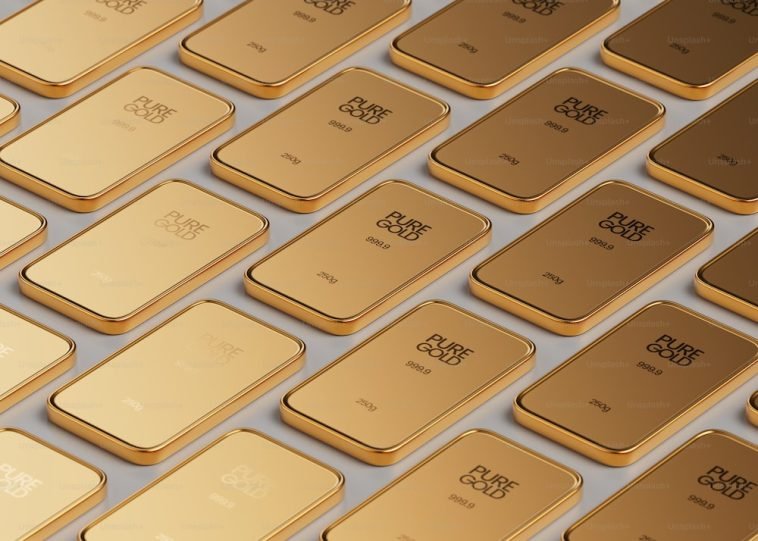Introduction.
Gold-plated jewellery has long been a popular choice for those seeking to combine affordability with elegance.
This exquisite form of jewellery utilizes a thin layer of gold to cover the surface of the base metal, creating a luxurious appearance reminiscent of solid gold.
While gold plating is an intricate and specialized process, it offers an accessible alternative for individuals desiring the allure of gold without the hefty price tag.
In this article, we will delve into the fascinating world of gold-plated jewellery, exploring the techniques, materials, and craftsmanship involved in its creation.
Disclaimer.
Please note that any financial advice provided by me is for informational purposes only and should not be construed as professional financial advice.
Investing involves risk and you should always do your research and consult with a licensed financial advisor before making any investment decisions.
I do not endorse any specific investments and is not responsible for any financial losses or gains that may result from following our advice.
The information provided by me is based on our best knowledge and understanding of the subject matter, but we make no representations or warranties of any kind, express or implied, about the completeness, accuracy, reliability, suitability or availability with respect of the information, products, services, or related graphics contained in any of our responses.
How Is Gold-Plated Jewellery Made?
Gold-plated jewellery has captivated individuals with its alluring beauty and affordability for centuries. It offers a way to adorn oneself with the elegance and prestige associated with gold, without the high cost.
The process of creating gold-plated jewellery involves intricate craftsmanship and specialized techniques.
In this article, we will explore the fascinating journey from base metal to a dazzling piece of gold-plated jewellery.
1. Base Metal Selection.
The first step in creating gold-plated jewellery is selecting an appropriate base metal. Common choices include copper, brass, and silver.
These metals provide a sturdy foundation and are easily receptive to the gold-plating process. The base metal should be free from impurities and thoroughly cleaned before proceeding to the next stage.
2. Cleaning and Preparation.
To ensure proper adhesion of the gold layer, the base metal undergoes a rigorous cleaning process. It is meticulously polished and degreased to remove any contaminants or surface irregularities. This step is crucial as it prepares the base metal for optimal bonding with the gold layer.
3. Electroplating.
The heart of gold plating lies in the electroplating process. The cleaned base metal, acting as the cathode, is immersed in an electrolyte solution containing gold ions.
A separate electrode made of pure gold functions as the anode. When an electric current is applied, a chemical reaction occurs, attracting the gold ions from the electrolyte solution to the base metal’s surface.
The gold ions gradually bond with the base metal, forming a thin layer of gold. The duration of the electroplating process determines the thickness of the gold layer.
The longer the process, the thicker the layer, resulting in a more substantial gold-plated piece. This thickness can vary based on the desired appearance and the intended use of the jewellery.
4. Quality Control.
Once the gold layer has been successfully deposited, the jewellery goes through meticulous inspection and quality control.
Skilled artisans examine each piece, ensuring its overall appearance, uniformity, and adherence to quality standards. Any imperfections or irregularities are carefully corrected to achieve a flawless final product.
5. Polishing and Finishing.
After passing quality control, the gold-plated jewellery undergoes a polishing and finishing process. This step enhances the piece’s shine, smoothness, and overall aesthetic appeal.
Skilled craftsmen use various techniques, including buffing and polishing, to refine the surface and bring out the lustre of the gold layer.
6. Durability and Maintenance.
While gold-plated jewellery possesses the charm of solid gold, it is important to note that the gold layer is relatively thin.
Over time, with regular wear and exposure to various elements, the gold layer may naturally wear off. However, proper care and maintenance can significantly extend the lifespan of gold-plated jewellery.
It is advisable to remove gold-plated jewellery before engaging in activities that may cause excessive friction, exposure to chemicals, or moisture.
When not worn, storing the jewellery in a soft pouch or a separate compartment can protect it from scratches and damage.
Conclusion.
The creation of gold-plated jewellery is a meticulous process that requires skilled craftsmanship and attention to detail.
From base-metal selection to the final polishing, each step contributes to the creation of a stunning piece of jewellery that embodies the beauty and allure of gold.
With its affordability and elegance, gold-plated jewellery continues to be a popular choice for those seeking to express their style and sophistication.






GIPHY App Key not set. Please check settings